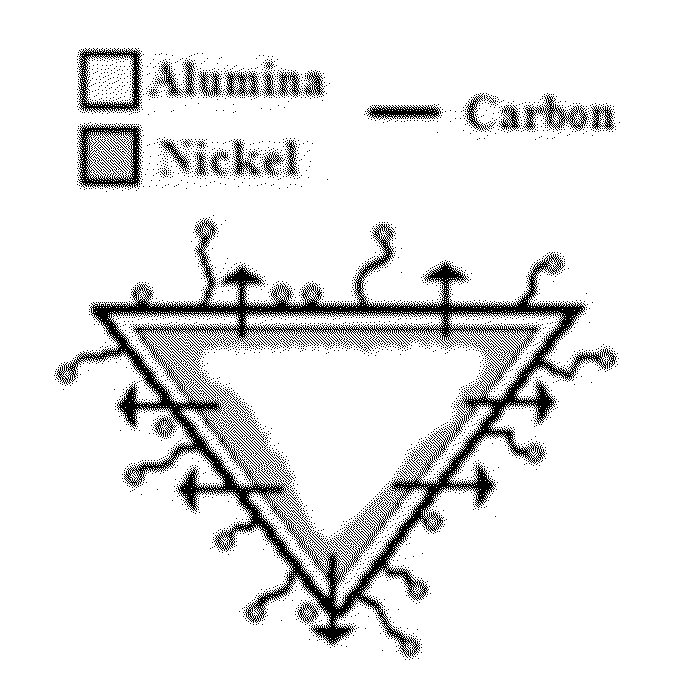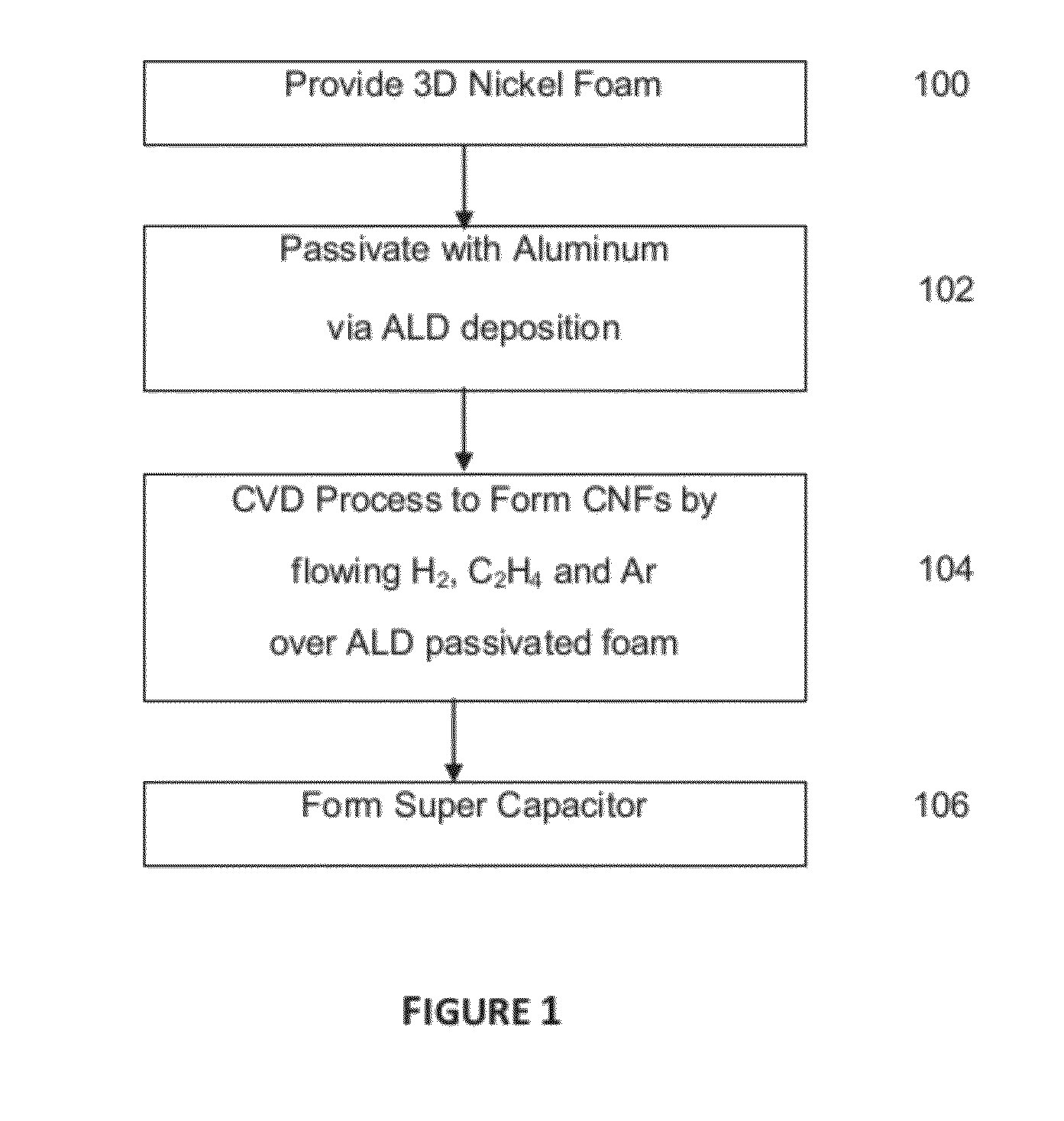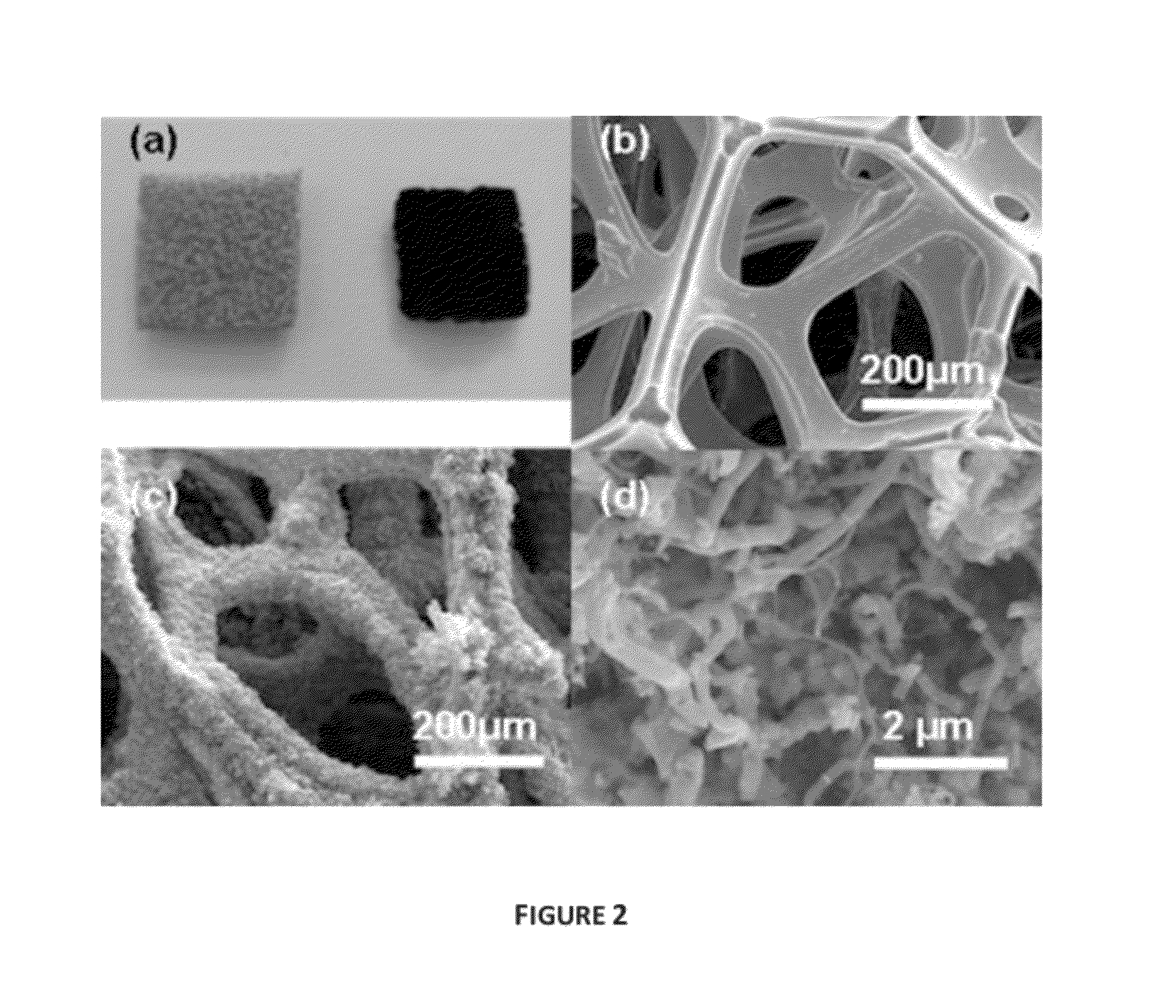Method of Fabrication of Carbon Nanofibers on Nickel Foam
a nickel foam and carbon nanofiber technology, applied in electrolytic capacitors, transportation and packaging, coatings, etc., can solve the problem of low loading and other problems, achieve supercapacitor performance, minimize undesirable nickel carbide formation, and facilitate mass loading of active electrodes
- Summary
- Abstract
- Description
- Claims
- Application Information
AI Technical Summary
Benefits of technology
Problems solved by technology
Method used
Image
Examples
example
Deposition of the Alumina Layer
[0027]Recipe: A piece of nickel foam of approximately 1 cm×1 cm×0.2 cm was obtained and placed in an ALD reactor. The reactor was internally heated to 150° C., and a constant flow of N2 at 50 sccm established within the reactor. Gas pulses of the following were then sequentially introduced: H2 O for 0.015 s, wait 20 s, then pulse trimethyl aluminum (TMA) for 0.015 s, wait 20 s, and repeat for 10 cycles. A growth rate of 0.91 angstroms per cycle at 150° C. resulted. The presence of the water was used to convert the trimethyl aluminum to alumina (Al2O3), according to the following formulas where the asterisks represent the surface species:
AlOH*+Al(CH3)3→AlOAl(CH3)2*+CH4 (A)
AlCH3*+H2O→AlOH*+CH4 (B)
[0028]In these studies, the alumina films were deposited using an ALD reactor. Each AB growth cycle consists of sequential exposure to TMA and H2O. When TMA is introduced to the ALD reactor, it starts to react with the hydroxyl (—OH) groups on the substrate su...
PUM
| Property | Measurement | Unit |
|---|---|---|
| Temperature | aaaaa | aaaaa |
| Temperature | aaaaa | aaaaa |
| Temperature | aaaaa | aaaaa |
Abstract
Description
Claims
Application Information
 Login to View More
Login to View More - R&D
- Intellectual Property
- Life Sciences
- Materials
- Tech Scout
- Unparalleled Data Quality
- Higher Quality Content
- 60% Fewer Hallucinations
Browse by: Latest US Patents, China's latest patents, Technical Efficacy Thesaurus, Application Domain, Technology Topic, Popular Technical Reports.
© 2025 PatSnap. All rights reserved.Legal|Privacy policy|Modern Slavery Act Transparency Statement|Sitemap|About US| Contact US: help@patsnap.com



